► VW’s updated Golf R driven
► Hatch and estate versions tested
► Still one of the ultimate daily driver cars?
The VW Golf R is back, freshly tweaked as part of VW’s efforts to facelift and update its entire Golf family. Is it still one the most rounded performance cars you could ask for?
At a glance
Pros: Powerful, composed, playful rear-bias on the limit
Cons: Only really comes alive at non-sensible speeds, Drift mode is unnatural, still hampered by haptic steering wheel buttons
What’s new?
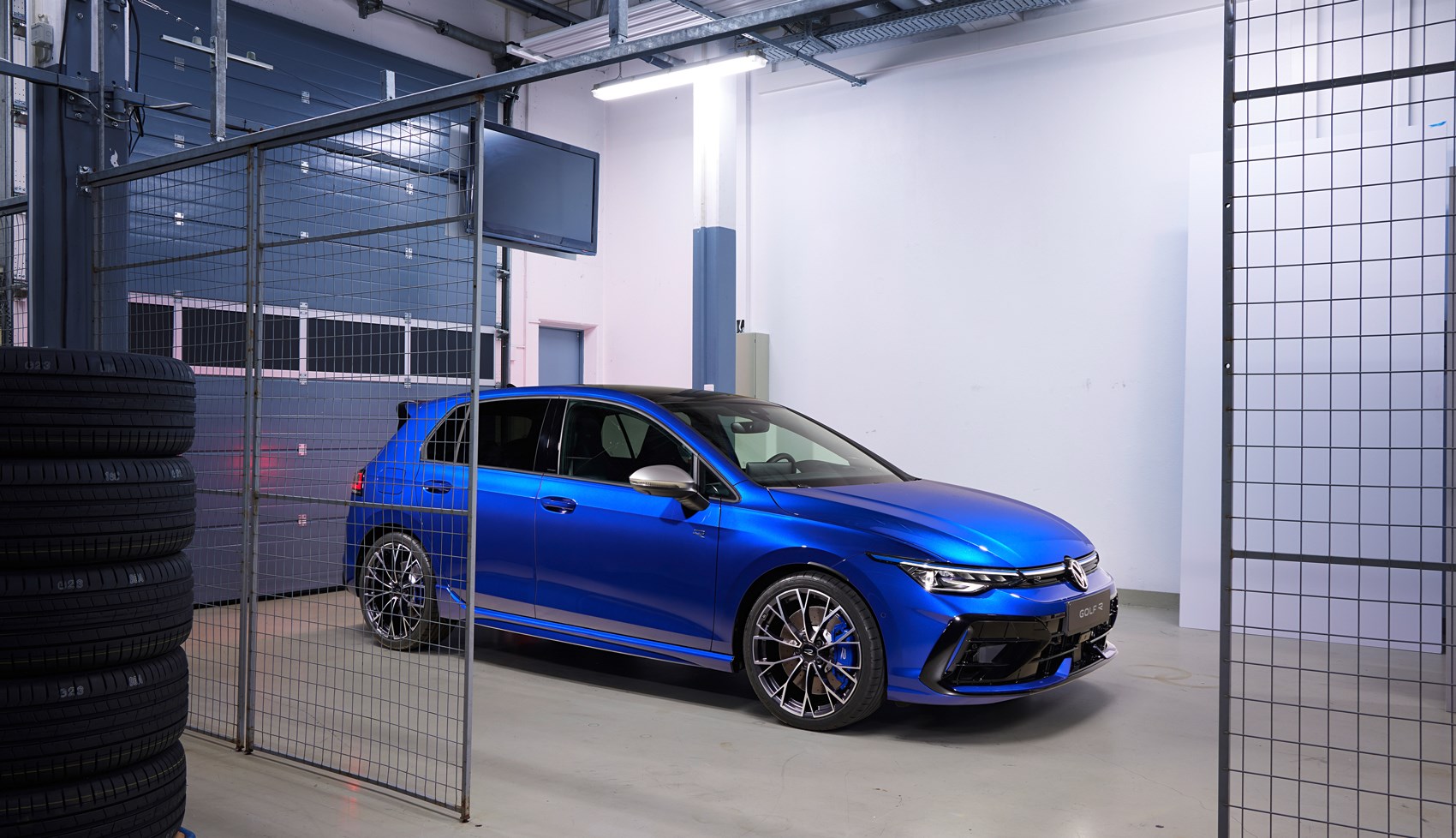
It’s essentially the same sort of stuff seen on the regular Golf models, as well as the GTI and GTI Clubsport. The R’s look has been sharpened ever so slightly and now features an illuminated front logo. The latest generation of matrix LED lights can be had, complete with redesigned rear light clusters, too.
Inside, the biggest difference is the inclusion of the VW brand’s latest infotainment screen and system named MIB4.
What are the specs?
If you’re familiar with performance Golfs, you’ll likely find all this extremely familiar. The Golf R is available as a hatchback or an Estate and features the Group’s perennial EA888 2.0-litre four-cylinder turbo’d engine. Here, it develops 328bhp and 310lb ft, good for a 4.6sec 0-62sec sprint and a limited top speed of 155mph for the hatchback; the Estate model needs another two tenths.
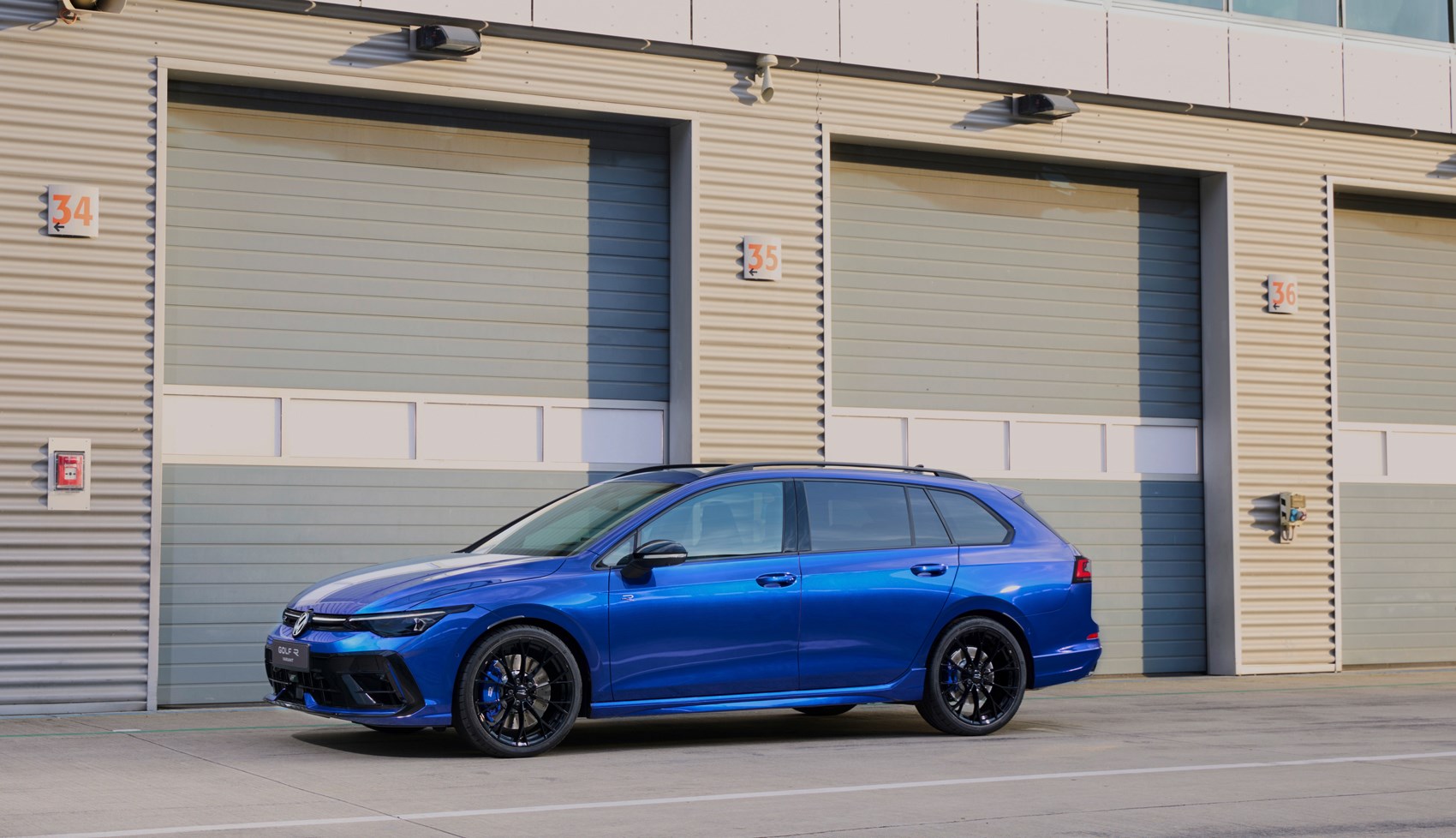
All Golf Rs benefit from 18-inch wheels that can be upgraded to 19s, an all-wheel drive system with torque vectoring included that’s now controlled by the car’s vehicle dynamics manager. Every Golf R features Eco, Comfort, Individual, Sport and Race drive modes and now features a GPS-enabled lap timer.
An R Performance Package is available for the hatch, which throws in 19-inch wheels and raises the top speed to 168mph. The pack also throws in Special and Drift modes that you can choose from; the former is a profile that has been ‘specially configured for the Nurburgring’, meaning the powertrain is on maximum attack but the chassis control is in Comfort spec to handle the bumps. The latter is a little more self-explanatory.
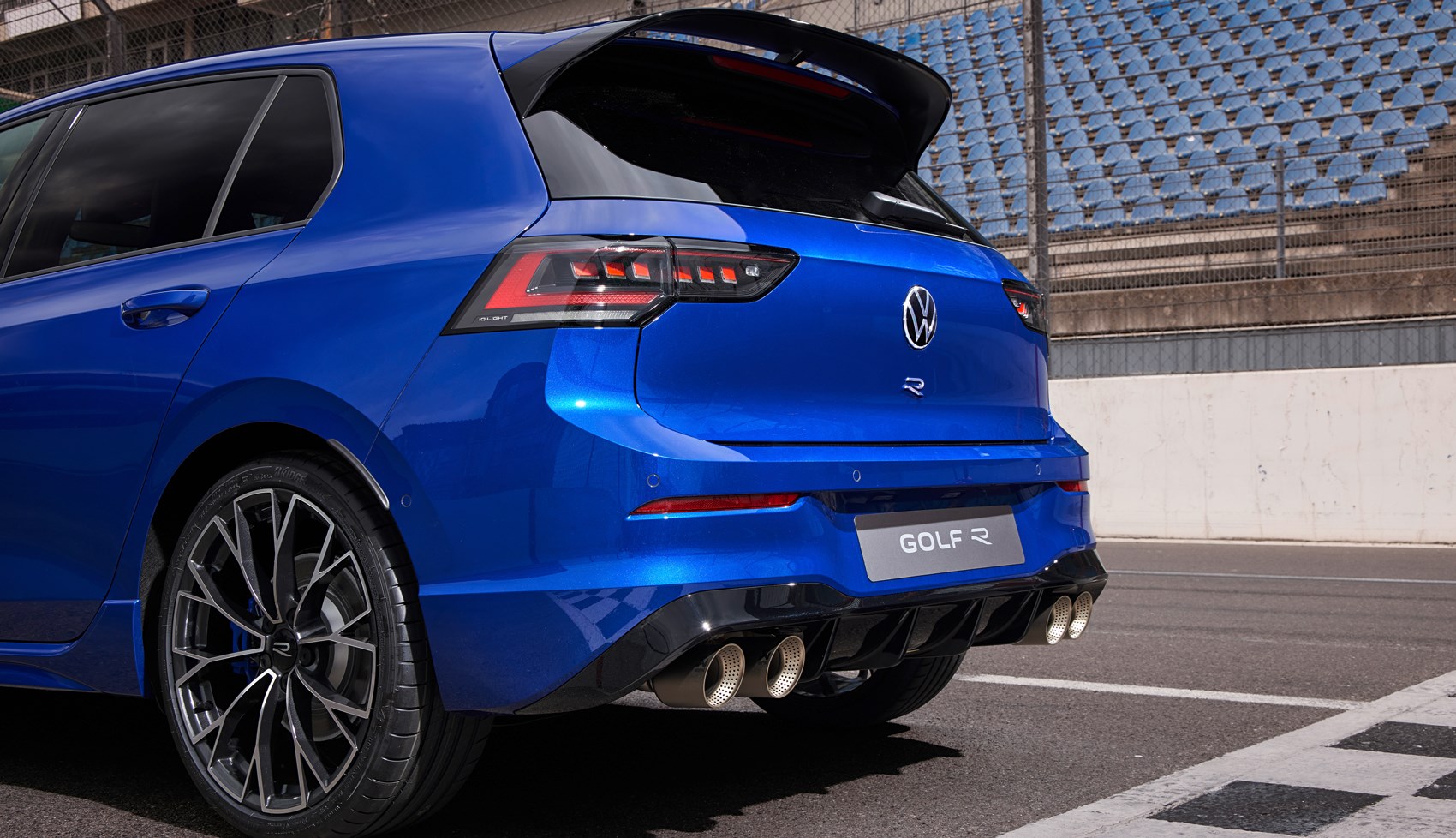
But, unlike the GTI Performance Pack available on the Clubsport, you’d need to pay extra for the parpy and farty Akrapoviç exhaust. New to the options list is the forged ‘Warmenau’ 19-inch wheels that VW say are 20 per cent lighter than the other wheel options.
Also, rather cheekily, Volkswagen UK still expects you to pay separately for Dynamic Chassis Control on the R – an almost necessary addition to unlock the most out of the car’s handling functions – while Volkswagen says it’s included in other European markets like Germany. Get that fixed, VW UK.
For a limited time, Volkswagen is also offering a Golf R Black Edition. As the name suggests, liberal use of black paint and colouring is applied here – as is the R Performance Pack.
How does it drive?
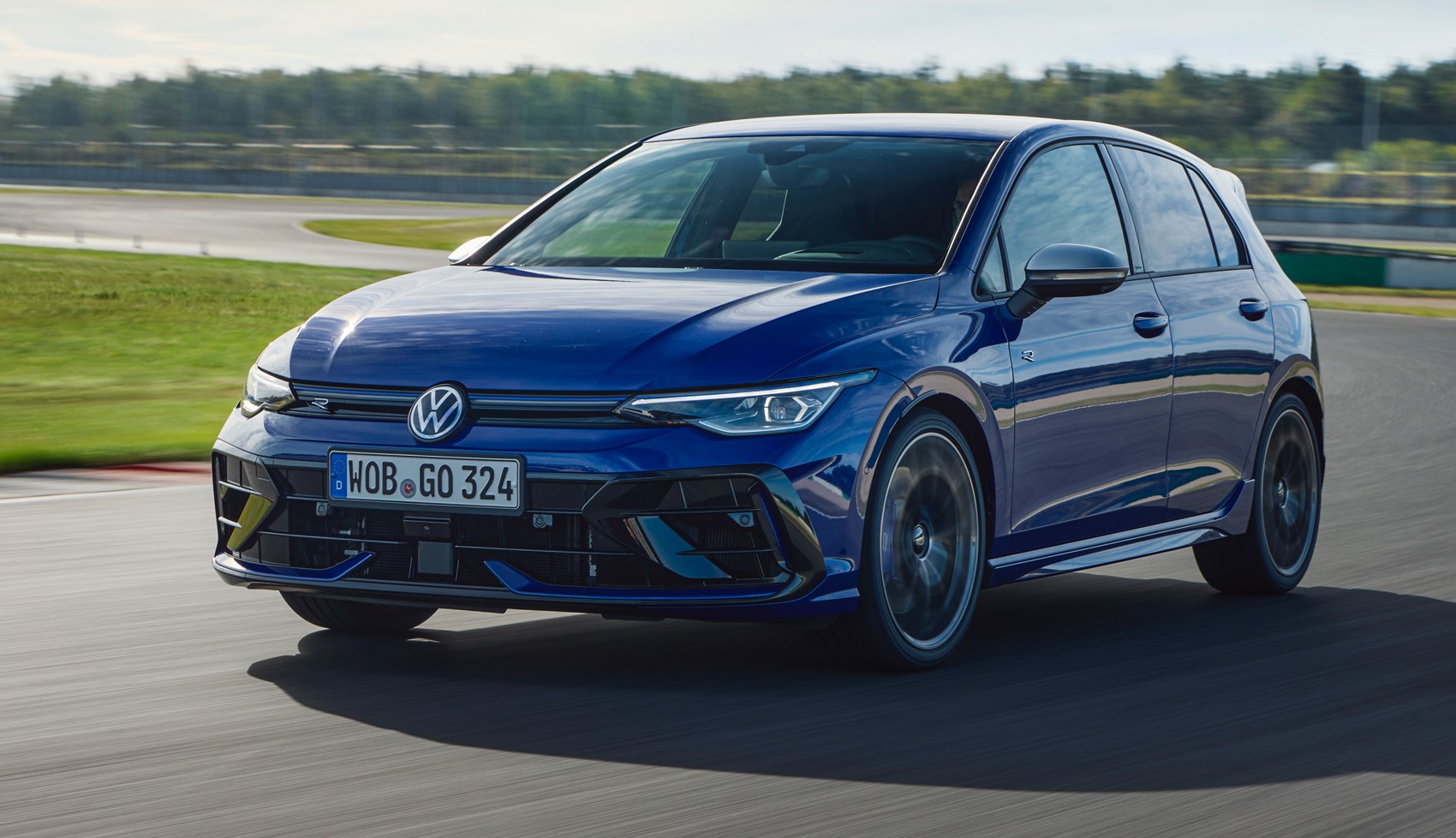
We’ve driven the updated hatchback and estate on track at Germany’s Lausitzring, as well as on the roads around the circuit.
Whether you’re on track or on the road, the Golf R is still a powerful car with a progressive surge of raspy revs as your speed builds no matter what the gear. There’s no lumpiness to its delivery even at very low revs, and brief throttle lifts won’t affect the turbo’s boost in Race mode; the R’s programming keeps the throttle valve open, so it builds back faster. The same impressive slickness can be said of the seven-speed dual-clutch transmission; there is no jerkiness at any speed – even slow crawls in traffic – and the shifts are snappy whether you’re hooning it down a country road or trying to set a new lap time on a track.
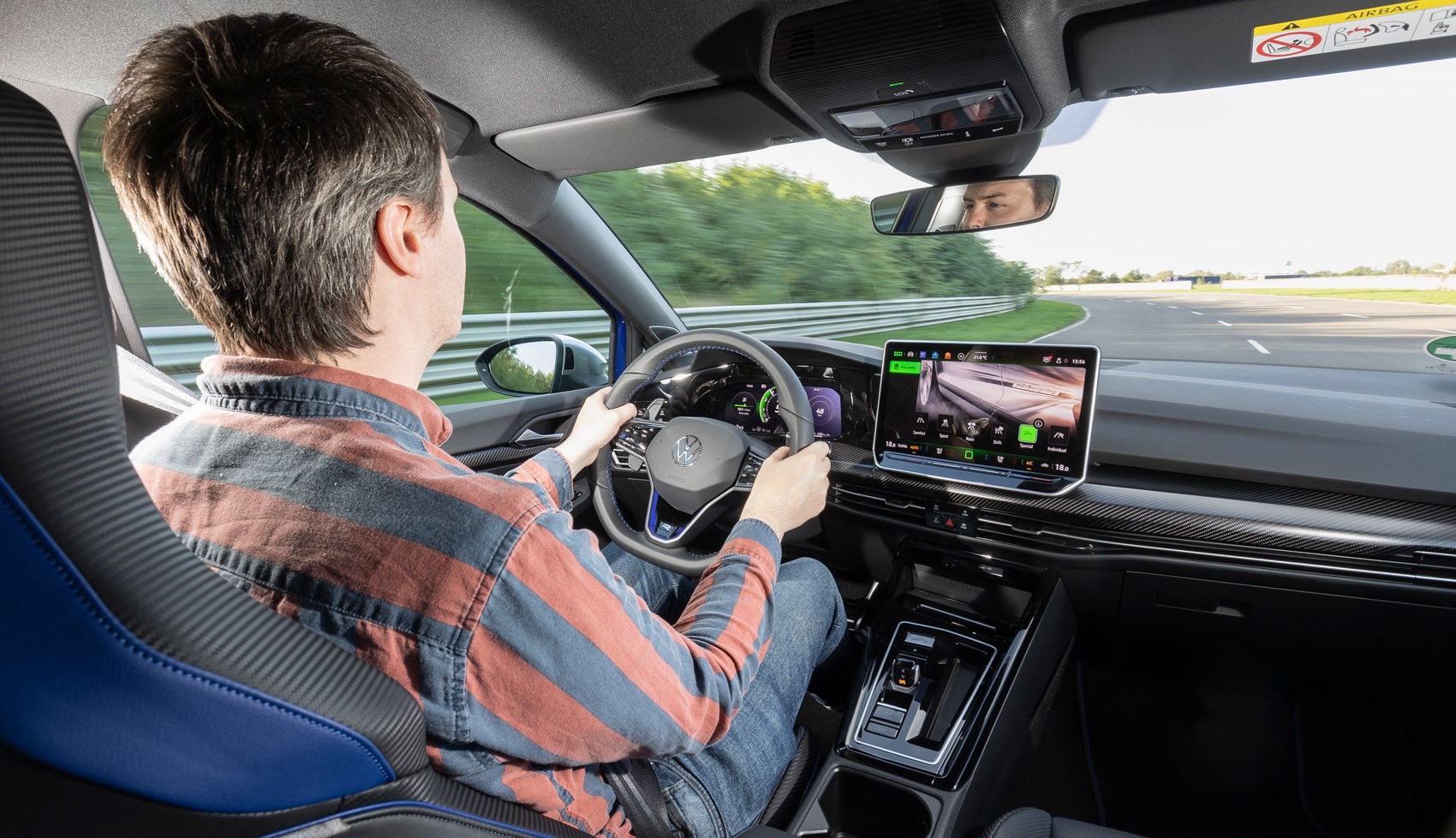
Compared to the GTI Clubsport, the R has a little more heft to its steering that’s welcome but it’s still not the most feelsome rack in the world. You’ve got enough confidence to find an apex, mind, as the Golf R’s fierce amounts of grip allow you to push harder and harder in search of its dynamic limits.
As you get closer, you notice the R hatch starts to feel a little more rear-biased while in Race (and with the ESC in Sport); it will pull itself around a corner from its backside, rather than carve the apex up at the nose. It also means you can have a bit of fun if you’re a little more heavy-handed – the R is happy to powerslide if you hoof it into a corner. The estate, meanwhile, feels like the more stable choice – there’s not much in it, and it’s only something we noticed driving both back-to-back on track, but a little of that rear bias Is dialled out with the wagon.
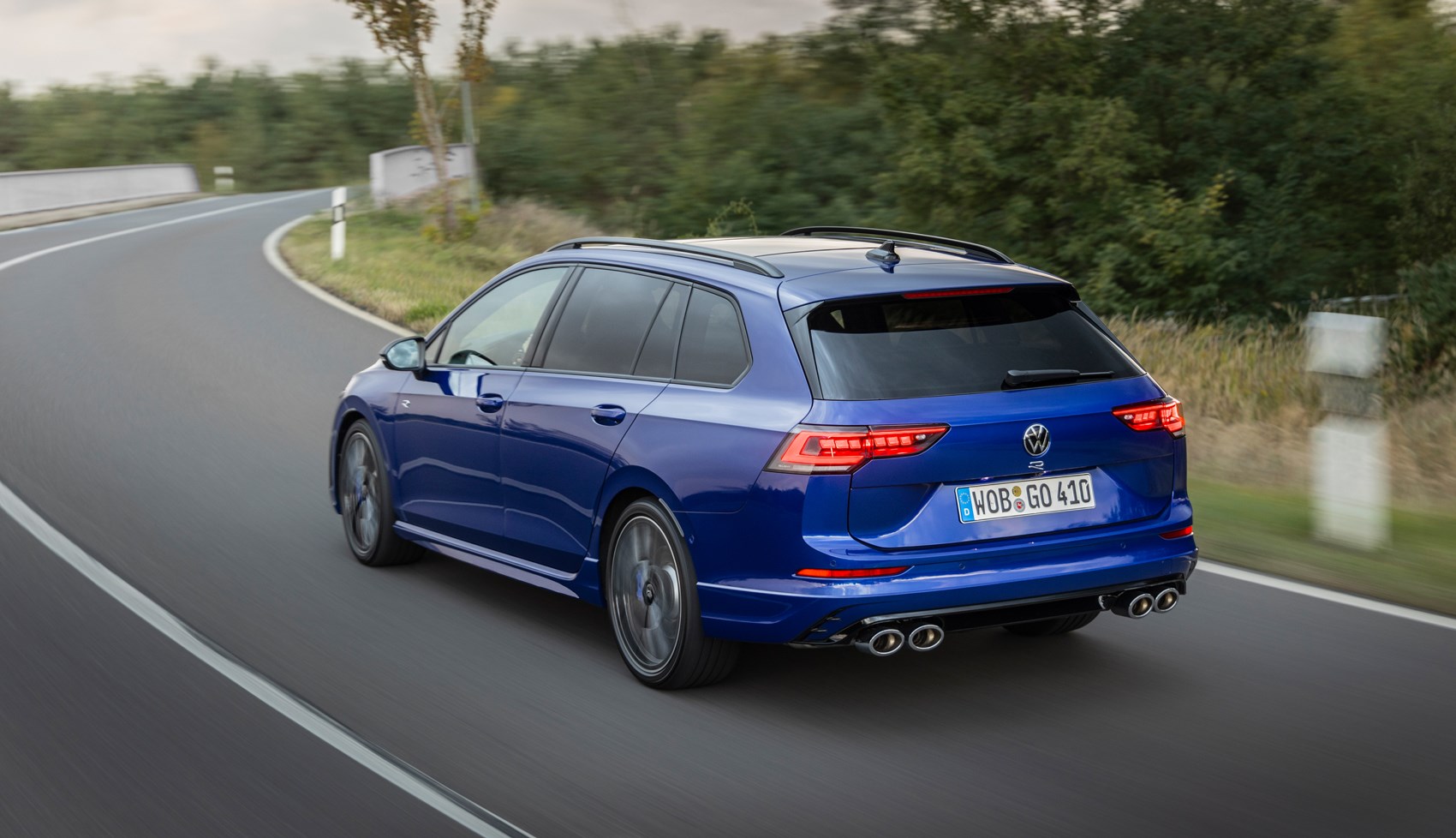
And then you realise those dynamic limits are so high that they’d likely never be found on the road. This is, put simply, still a fiercely fast car to hustle on the street and allows you to enter silly speeds far too quickly. On track, that is welcome and allows novice track drivers to feel a little more comfortable. But that whole cliché about quickly losing your licence if you fool around on the road is still very much true.
That’s even before we discuss the Drift mode. Again, this was on the Mk8 version of the Golf R, with VW saying its made some tweaks. But, in practice, it still feels very synthetic; the system expects you to floor it at all times in a low gear and barely add any steering input, which just feels unnatural to the conventional way of initiating a slide. We had better success initiating powerslides with it off.
What’s the interior like?
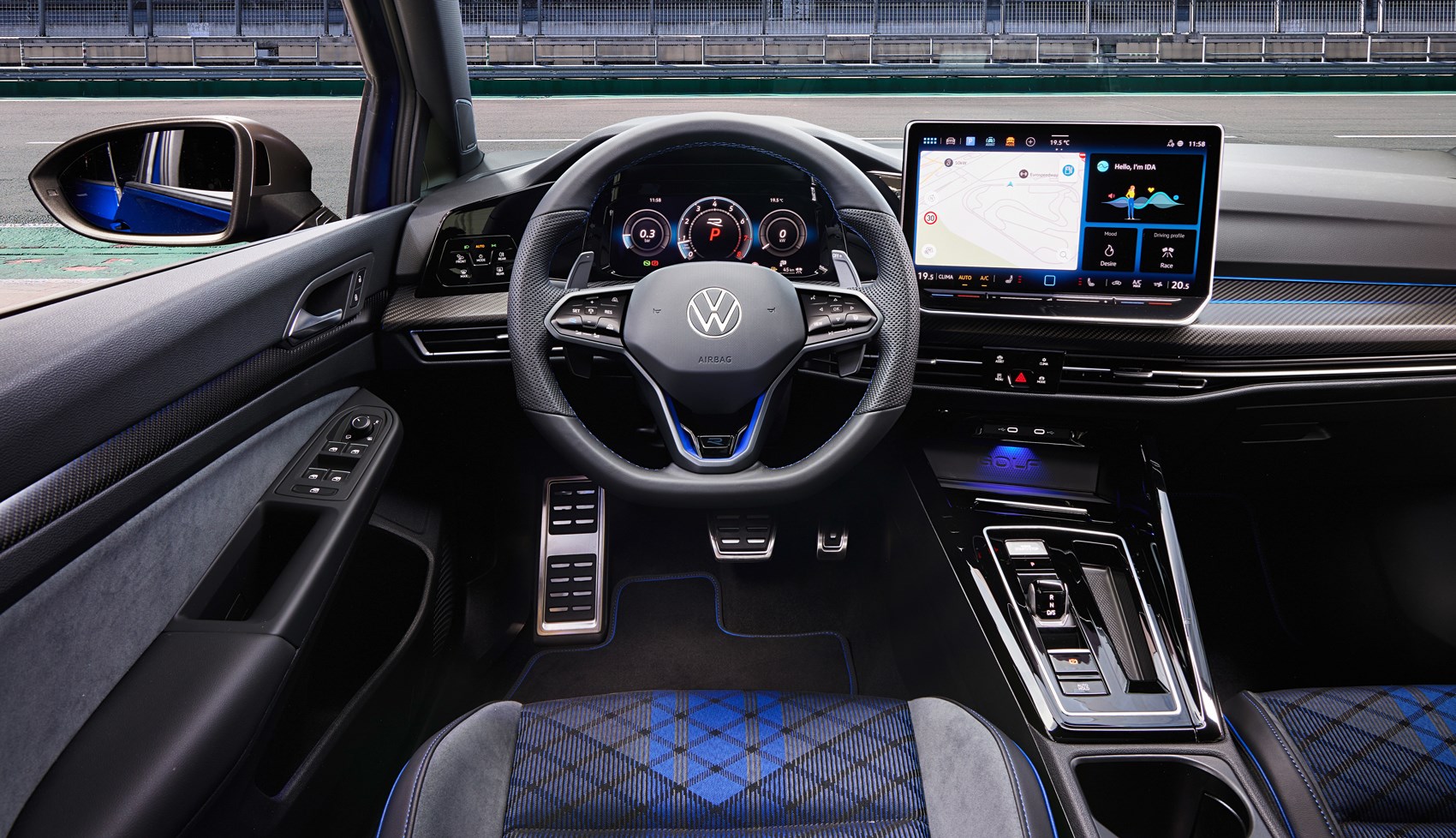
The changes are only light inside, mainly dominated by the new infotainment screen. Overall, the system is an improvement over its predecessor; the screen is very crisp to read and responsive, and VW has put effort in to include a fixed bar for quick-use climate control functions and a customisable menu at the top that allows you to choose what you use most to get a fixed touch point. It is, however, still a massive touchscreen with some of the usual grumbles that comes with. Some menus almost require you to be stationary to use properly, for example.
Frustratingly, the Golf R still uses the haptic steering wheel ‘buttons’ found on the pre-facelift car while the rest of the Golf range now features fully physical ones for the Mk8.5. You can squarely blame that on the inclusion of an R button that’s been on the wheel since the pre-facelift car. It’s still a useful feature to quickly access the car’s sportiest mode, but it’s also one that VW seemingly didn’t think was worth spending money on new component set for. Madness.
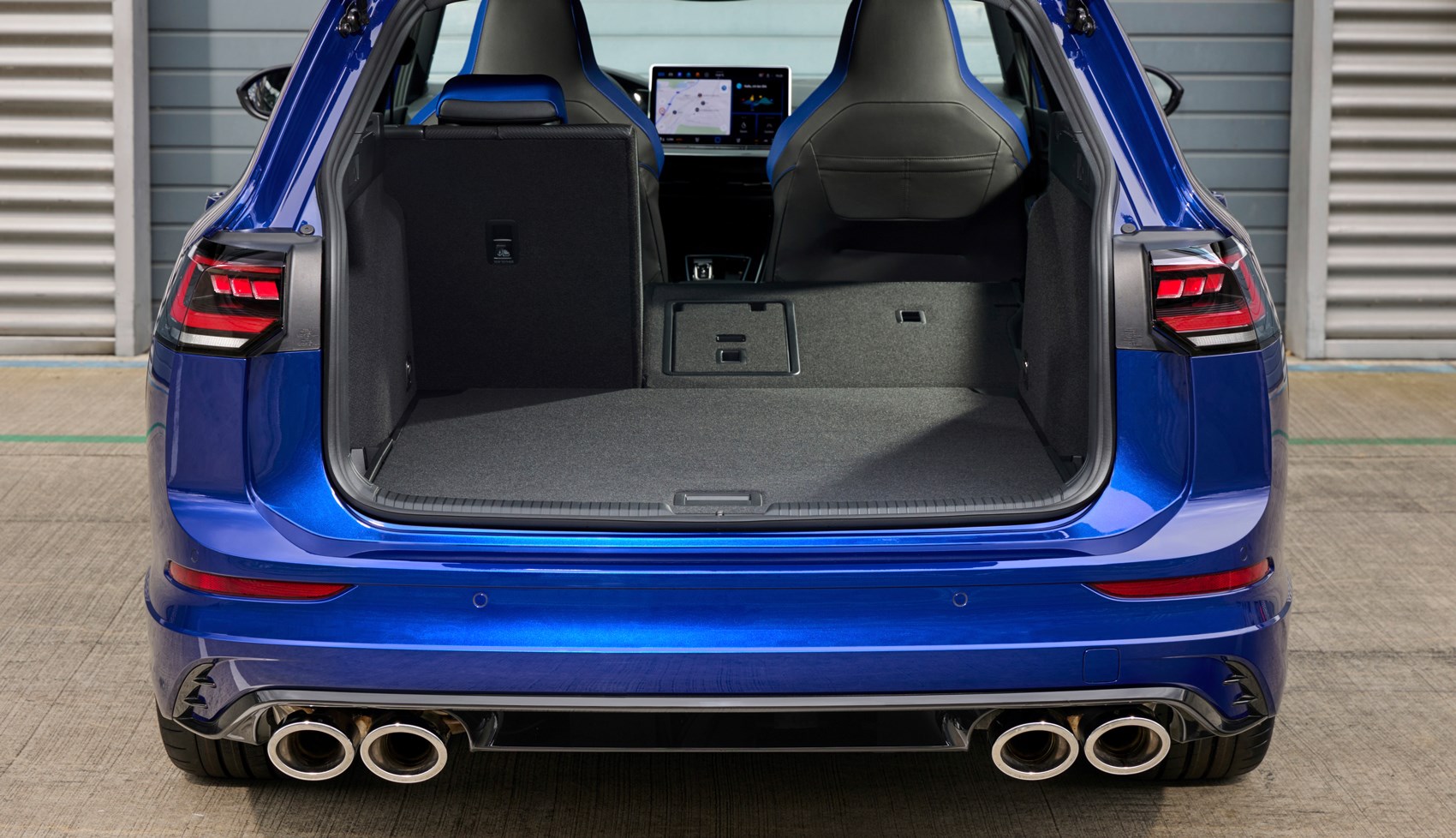
Other than that, not much has changed from before. Lots of glossy black plastic on the centre console, some useful storage options and a pair of thickly bolstered and nicely trimmed front seats. A neat touch for the R is the inclusion of some bigger, more tactile gearshift paddles that no other Golf benefits from. Rear space is okay for adults, and the boot is a competitive size regardless of whether you choose the hatch or estate.
Before you buy
Golf R models start at around £43k at the time of writing, but the one you’d really want (with the R Performance Pack, adaptive chassis control and the Akrapoviç exhaust, surely?) is around £50k.
Alright, fine, that’s our personal preference and maybe not yours.
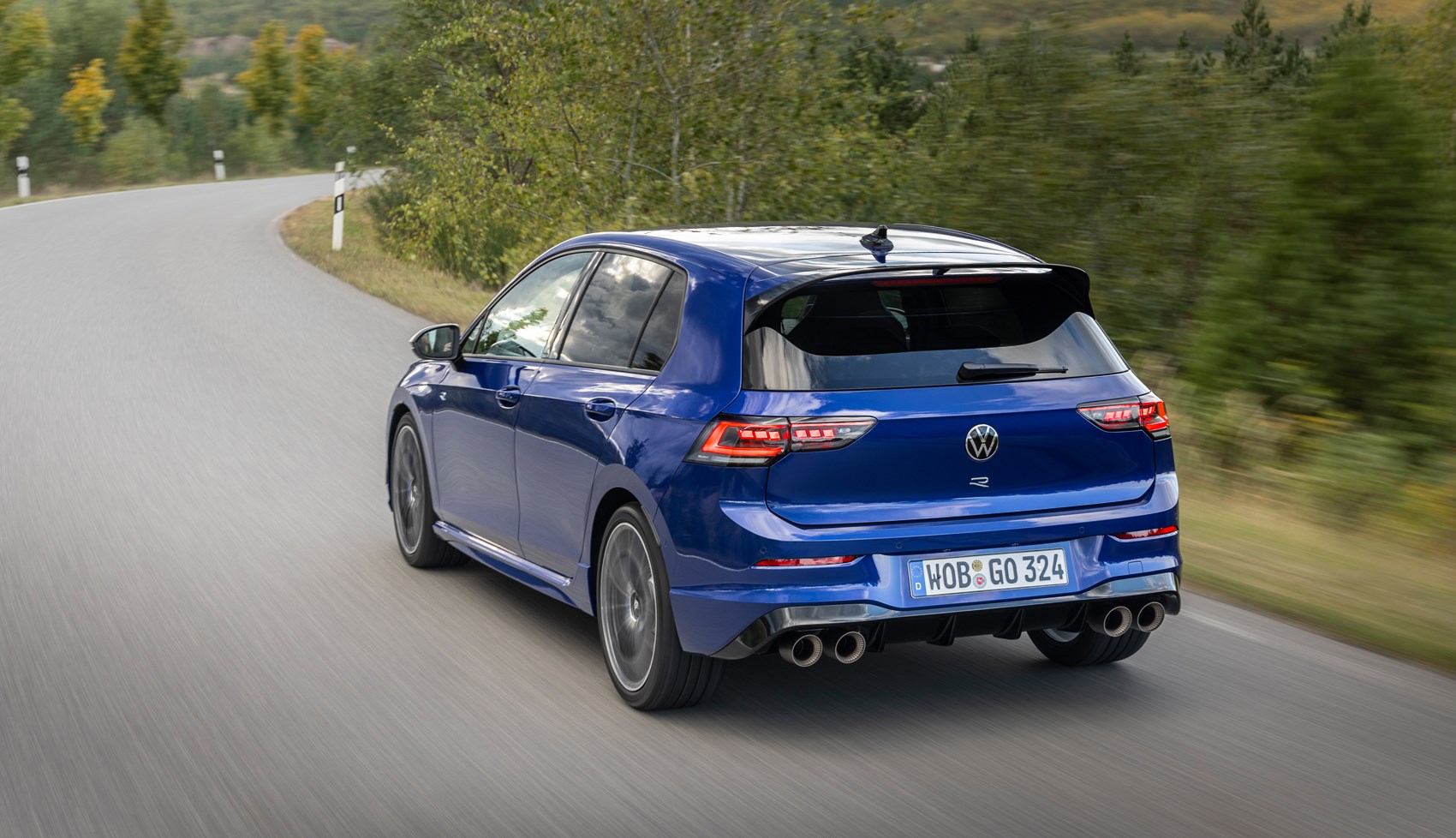
Even so, the fact the Golf R is a £45k(ish) hot means it comes into contact with quite a few competitors, with the Audi S3 and Mercedes-AMG A35 being the Golf R’s most natural rivals. The cousin from Ingolstadt has been designed to be that little bit more aggressive with help from the more potent RS3 but has an even blander interior than the Golf does, while the AMG feels harder and brittle against the Golf.
And, of course, at this price, the Civic Type R still looms from above; it’s front-wheel drive and has a manual but is still the best hot hatch of the lot.
Verdict: Volkswagen Golf R
There aren’t really any big surprises here – the Golf R is still one of the most well-rounded, capable and fiercely fast cars you can buy that still feels accessible. Its dynamic ceiling is, frankly, higher than you’d ever really experience on the road and the Drift mode is a daft trinket, but there’s no ignoring how impressive it remains.
Specs are for a Golf R hatchback with the R Performance Pack